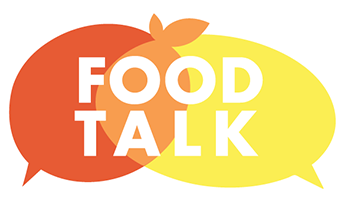There’s a lot of pressure to accomplish big New Year’s Resolutions. Instead of focusing on one large goal, what if you broke down each month into a smaller goal?
Small accomplishments can build confidence and make a big difference in your health. Here are twelve goals you can focus on during each month of 2019 to help you become a healthier version of yourself.
January: Practice mindful eating
Mindful eating is the practice of being present while eating. It includes paying attention to the physical and emotional responses one has to eating. It has been associated with reduced emotional eating [1]. Mindful eating is also suggested to decrease the influence of non-physical eating cues, such as attractive food packaging.
Sample goal: Use all five senses while eating lunch every day for one week in January.
Reflection: What does your food look and taste like? What is the texture? What do you smell and hear?

February: Swap soda for water
Water helps cushion your joints and get rid of bodily wastes through urine and sweat [2].
Substituting water in place of soda can also help with weight management. Skipping one 20-ounce soda and choosing water instead can save you about 240 calories.
Sample goal: Swap soda for water once a week during the month of February.
Reflection: How was skipping the soda? Did you miss the flavor or the bubbles? Try adding lemons or limes to your water. Consider sugar-free sparkling water.
March: Sleep 7-8 hours a day
Adults are recommended to get between 7-8 hours a night [3]. Not getting enough sleep can cause you to feel tired during the day. It is also linked to an increased risk for obesity, diabetes, inflammation, and cardiovascular disease [3]. Studies show that there is an increased risk for death associated with short (6 hours or less) and long (9 hours or more) sleep times.
Sample goal: Track how long you sleep for one week in March.
Reflection: Are you under or oversleeping? If you are not sleeping enough, explore some strategies for getting more sleep. If you are oversleeping, how could you prevent it? Are you making up for lost sleep earlier in the week?
April: Avoid sitting for long periods of time
Americans spend close to 8 hours a day not moving much [4]. Sitting a lot has been associated with having a higher risk for weight gain, heart disease, and death [5].
These risks are especially true for those who watch a lot of TV. Risk starts to increase at watching just 3 to 4 hours of TV a day.
Sample goal: Reduce your TV time by 30 minutes every day during the month of April.
Reflection: How did you spend the time you saved by not watching TV? Did you move more or spend time with family?

May: Get outside
Being in nature can help you recover from “mental fatigue”[6]. Mental fatigue is when you have trouble thinking after doing work that took a lot of mental energy, or due to stress [7]. Being outside can also promote a positive mood [6].
Sample goal: Visit a park twice in the month of May.
Reflection: How did you feel after you spent time outside? How could you work more nature time into your usual schedule?
June: Eat your greens
Green leafy vegetables are high in antioxidants [8]. As a result, they have been suggested to be one of the best cancer-preventing foods. Studies show that eating 2 to 3 servings of greens a week may lower the risk of certain cancers. A serving of leafy greens is 1 cup raw or ½ cup cooked.
Sample goal: Eat 2 servings (2 cups raw or 1 cup cooked) of green leafy vegetables each week during the month of June.
Reflection: What if you experimented eating the greens in different ways? Try adding them to a soup recipe, eating them cold as a salad, or mixing them in your smoothie.
July: Rinse your beans
The CDC recommends consuming less than 2300 mg, or about 1 teaspoon, of sodium a day. Americans eat an average of 3400 mg a day [9]. Most of that sodium comes from meals purchased outside the home and processed food, including canned foods.
While offering convenience and cost savings, there is a simple step you can take to protect your heart when choosing many canned vegetables, including canned beans.
One easy way to lower your sodium intake is by rinsing away the juice your canned beans were packaged with before cooking them. Using a strainer over the sink can be helpful.
Sample goal: Practice rinsing any canned beans you eat over the course of one week. See if you can do the same for the rest of July.
Reflection: Reflect on why you might care about your blood pressure and your heart health, both of which are affected by sodium. How else could you reduce sodium in your diet?

August: Walk at lunch
Walking can help blood get to where it needs to go in your body. It can also help build muscle, strengthen bones, and cause the release of chemicals that improve your mood [10].
Sample goal: Spend half of your lunch period twice a week walking outside. Increase walking to three times a week after the first week. Continue for the rest of July.
Reflection: How does your body feel before, during, and after walking? How is your mood?
September: Eat more yogurt
Did you know that all bacteria aren’t bad? In fact, a healthy gut has both good and bad bacteria that coexist. Good bacteria can break down toxic food items and make certain vitamins, such as vitamin K [11]. The balance of your gut bacteria can even influence the prevention or management of certain diseases. Yogurt with “live, active cultures” have good bacteria called probiotics in it to support a healthy gut.
Sample goal: Eat one yogurt with “live, active cultures” a week during the month of September. Greek yogurts with minimal sugar added are a good place to start.
Reflection: Could you incorporate yogurt into your cooking as well? Try this Greek salad with chicken or yogurt crunch parfait.
October: Cook at home
Cooking meals at home instead of going out to eat is a good way to save money. It also allows you to control your portion sizes and decide what ingredients go into your food.
This is important because meals from restaurants are not always the lowest in calories. In fact, a 2016 study found that 92% of the meals from various restaurants contained more calories than required for a single meal [12].
Sample goal: Try to cook at least three meals at home during the first week in October. Increase the number of meals by one for each remaining week in October. Check out our top 7 recipes from 2018 and our recipe page on Pinterest for inspiration.
Reflection: Did you make a new recipe or a familiar one? What obstacles did you run into? How can you avoid those issues the next time?

November: Eat in front of your kids
Children learn about eating through their own experiences and by watching others [13]. Studies show that children will eat a similar amount of fruit and vegetables that their parents do. The takeaway? Eating healthful foods in front of your kids can inspire them to do the same.
Sample goal: Eat at least three meals a week with your children. Include at least one fruit and/or vegetable at each of those meals. Try to repeat for the remaining weeks of November.
Reflection: How was having family meals together? Did you notice a change in your child’s eating patterns?
December: Try Meatless Monday
Eating less red and processed meat can benefit both you and the environment. Swapping red meat for lean meats such as turkey or chicken can cut your saturated fat intake [14]. Reducing the amount of processed meats, such as deli meats or smoked meats, can cut your risk for colorectal cancer [15]. Eating less meat can also reduce the number of harmful chemicals released into the environment [16].
Sample goal: Try practicing Meatless Monday (not eating meat on Mondays) for the month of December. Find meatless recipes here.
Reflection: How did you feel about having meatless meals? Was it easy or difficult to find meatless recipes?
Written by Taylor Newman, Ph.D./DI student | Edited by Laurel Sanville, MS, RDN, LD
Original photo sources:
[1]Warren, Smith, & Ashwell (2017)
[5]Owen, Sparking, Healy, Dunstan, & Matthews (2010)
[6]Maller, Townsend, Pryor, Brown, and Leger (2006)
[7]Bernstein, Durkee, Phan (2016)
[11]Harvard School of Public Health
[14]American Heart Association

